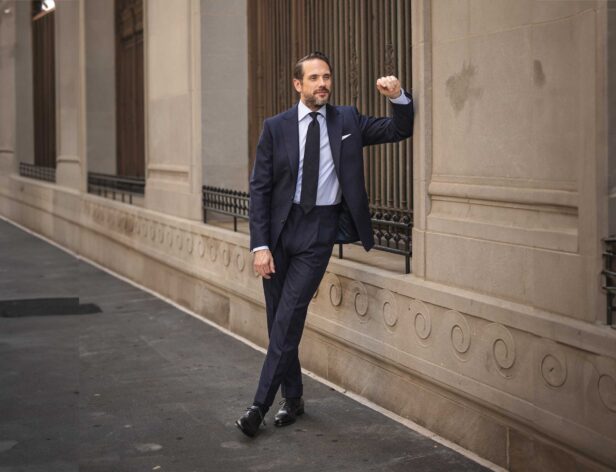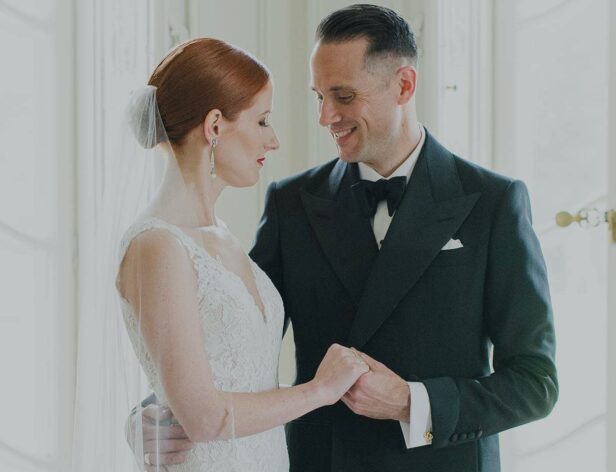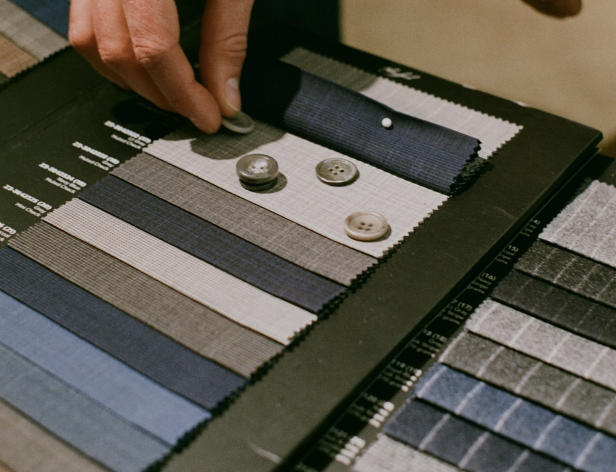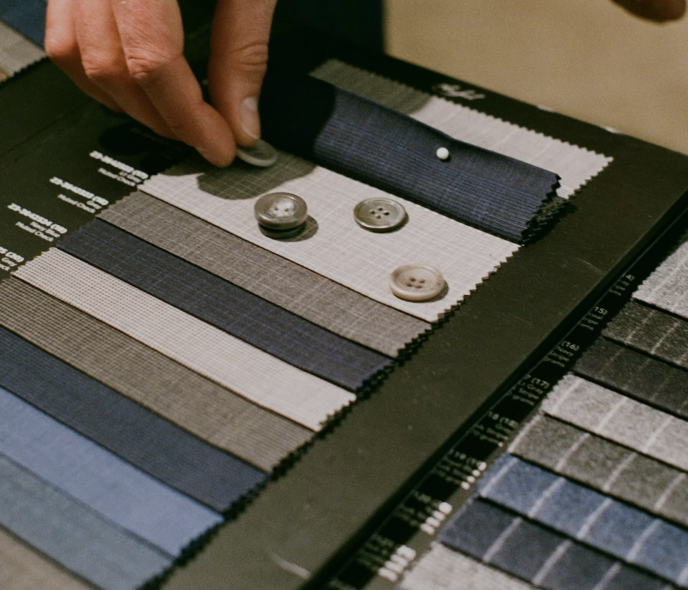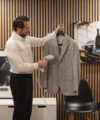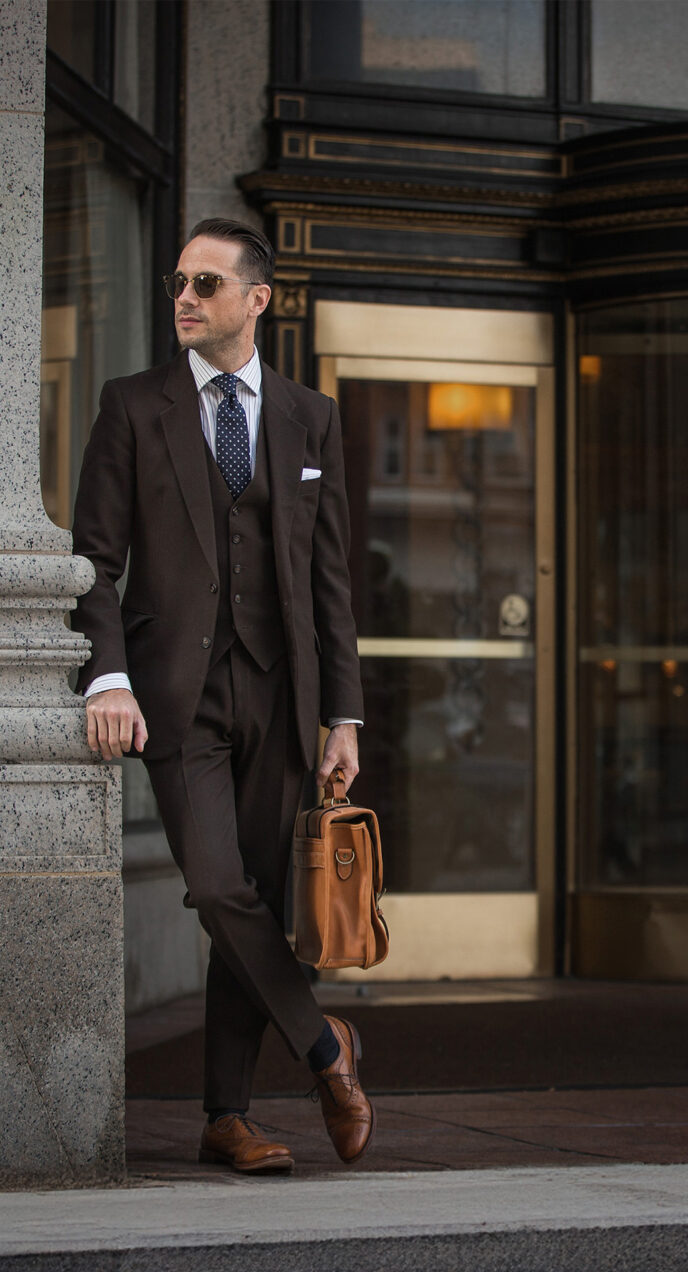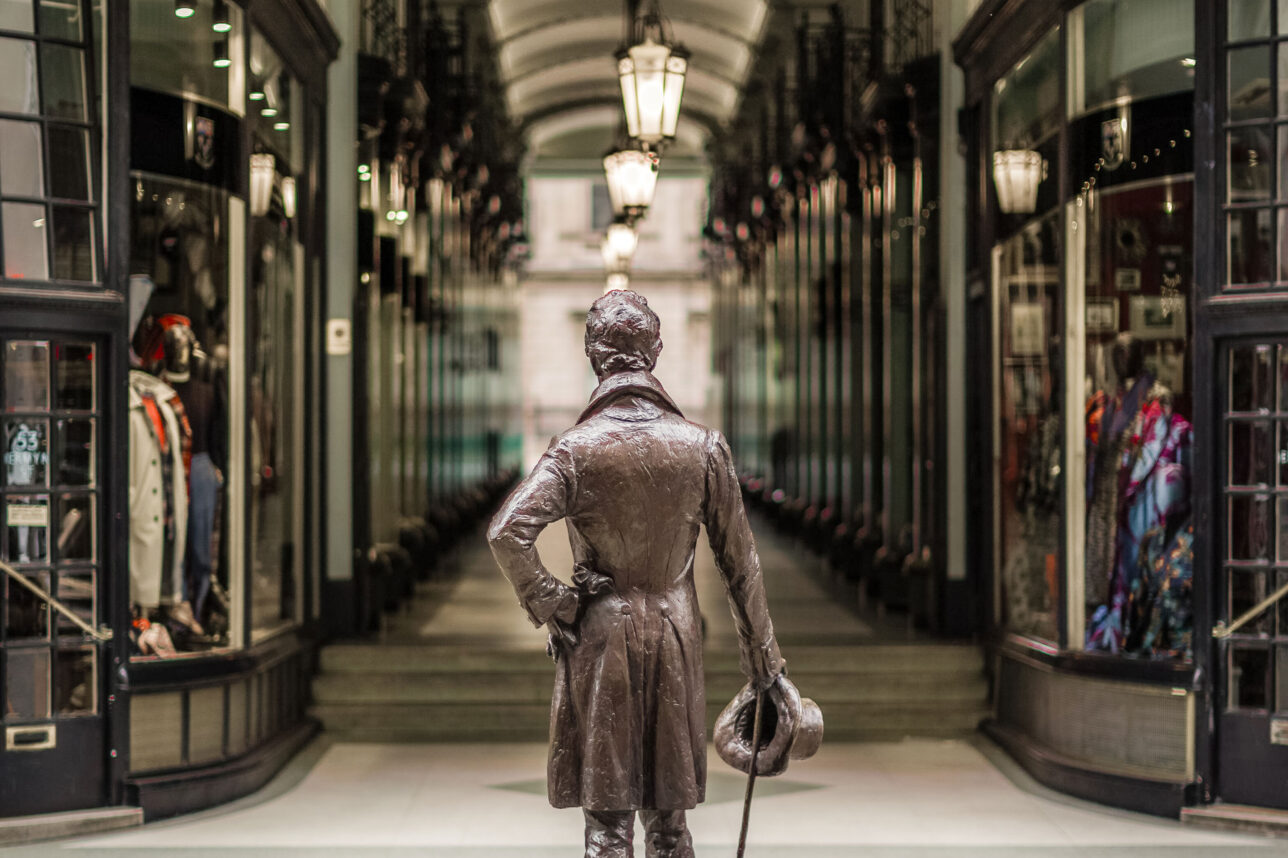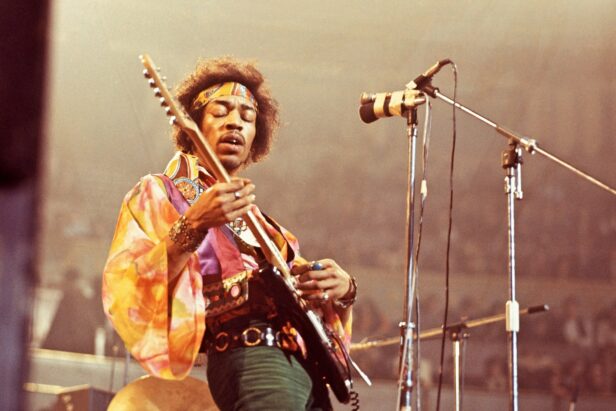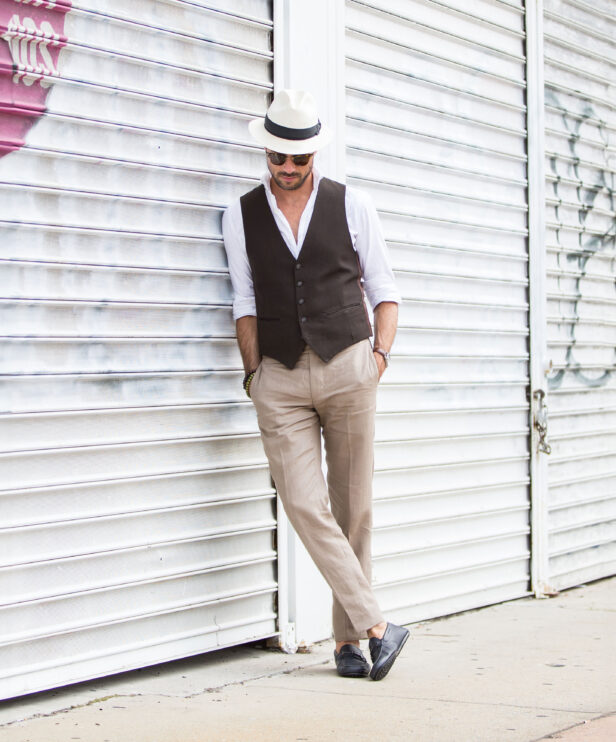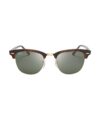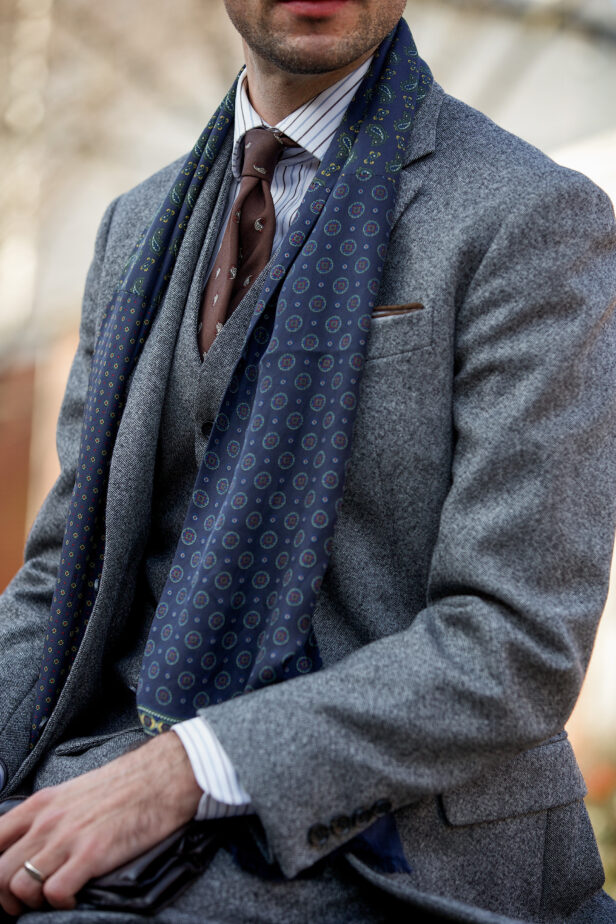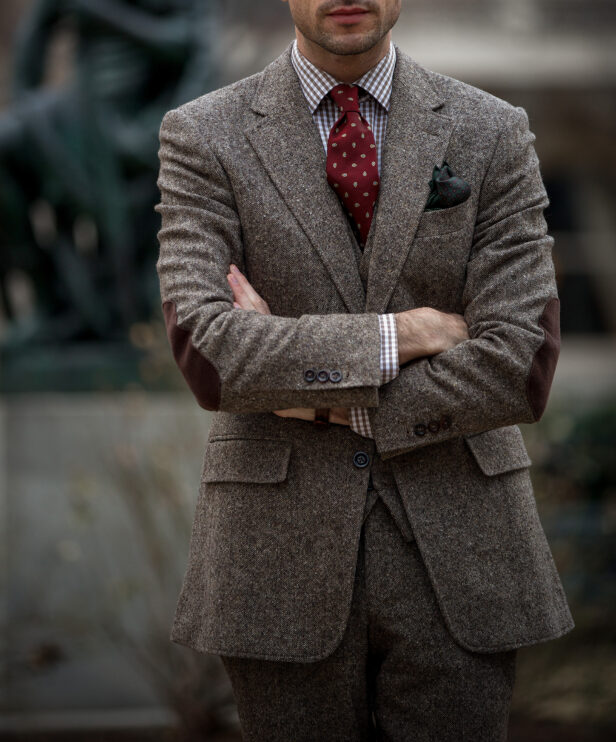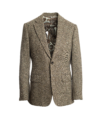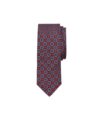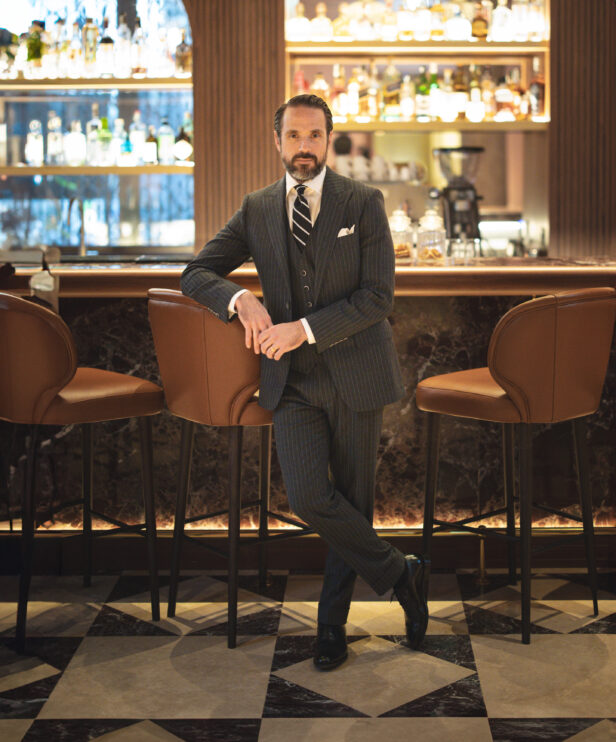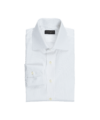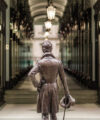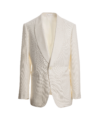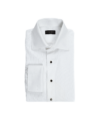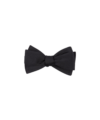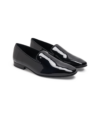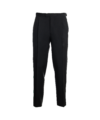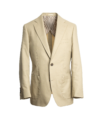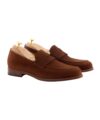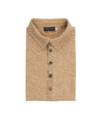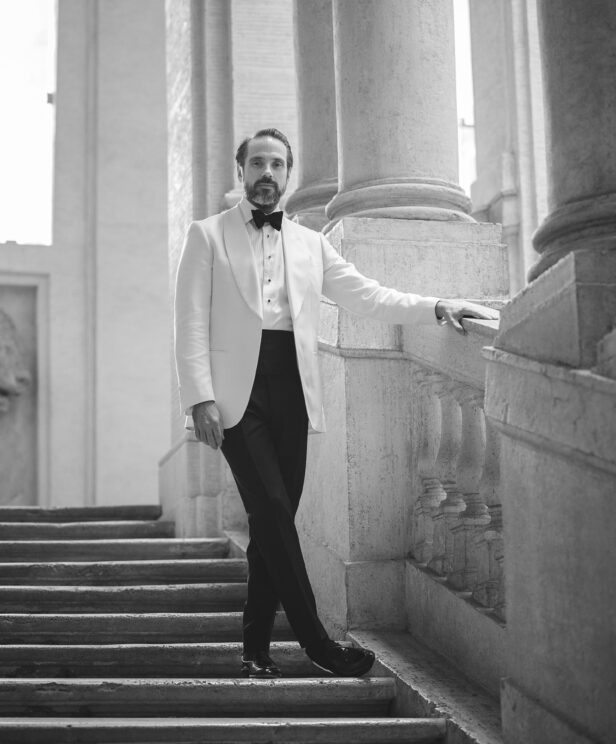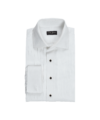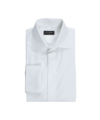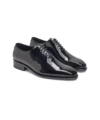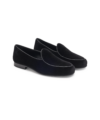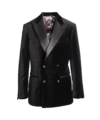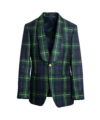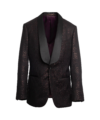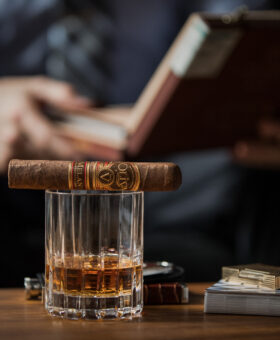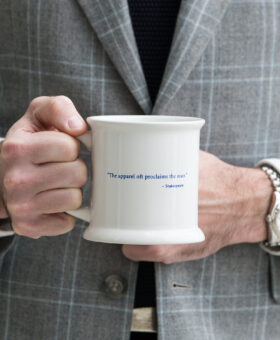Share
Are three-piece suits still in style?
“…To riding your bike, mid-day past the three-piece suits!” That’s a line from “La Vie Boheme,” a song in Jonathan Larson’s musical “Rent*.”* His character, photographer and wannabe documentarian Mark, is actually mocking the Wall Street crowd sweating in suits while he breezes by. Perhaps it is a product of the 90s, but a full three-piece suit has steadily fallen from grace. And that’s a crying shame.
The truth is, the three-piece suit is a fantastically useful garment deserving of a place in the modern man’s wardrobe.
Can we resurrect it? I think so. Let’s dig into our ultimate three-piece suit guide.
What Goes Into a Three-Piece Suit?
The discerning reader will note a ‘three-piece suit’ does indeed contain three parts: a jacket, a vest (or waistcoat, if you’d like to call it), and a pair of trousers. Just as with any two-piece suit, all components should be of matching cloth and pattern. Windowpane suit + solid vest ≠ a three-piece suit. That’s just a suit with an odd vest. While that isn’t necessarily a bad thing, a three-piece suit it is not.
Other than having all parts having the same cloth, you’ve got flexibility on each piece.
Jackets can be single or double-breasted, but personally I’d go for single-breasted. A double-breasted model is already effectively a second layer of fabric, so a vest is a bit overkill. The coat can have peaked or notched lapels. While this is personal preference, I’ll offer a few suggestions.
- First, consider the scale of formality. A more formal suit is perhaps best suited — ahem — to peaked lapels, while a standard notch works better, at least in my opinion, for most daywear situations.
- Second, the fabric. A charcoal flannel suit would look excellent with full-bellied peak lapels and a double breasted waistcoat. The same might not be said for sand-shaded cotton.
- Third, and kind of hybrid of the first two, consider how often this will be worn as a full three-piece.
The vest itself can be single or double-breasted. Traditionally, a single-breasted vest has six buttons, with the bottom one left unbuttoned for comfort when seated. Double-breasted vests usually, but not always, have six buttons as well. Vests traditionally paired with tuxedos can have a deep placket and only four buttons. Some of this look has made its way into modern business wear, and I’m not sure how much I like it.
While vests can have lapels (even peaked ones) themselves, I’m less inclined to go for them. In my view, a lapel-less vest sits cleaner and better complements the outfit.
Trousers, of course, function exactly the same as a two-piece suit. Flat front. Single or double pleat. Cuffs or no cuffs. It’s up to you!
Where Did Three-Piece Suits Come From?
Good question. While it’s difficult to nail down an exact time and place, October 7, 1666 is a good start. England had lopped the head off of a King in 1649 and lived under Parliamentary rule (and without Christmas) for about a decade, only to decide they wanted a King after all. That was the affable Charles Stuart, son of the previous King, who ascended the throne as Charles II in 1661.
During the Interregnum, the young Charles had been exiled to France under the protection of the excellently-coifed and fabulously-dressed Louis XIV — The Sun King. However, the fops the French court decked out in doublet and hose just didn’t suit him. Nor did it suit his subjects when he returned as King.
But, the decision to adopt a new style literally overnight might just have been political. A series of unfortunate events — War in the Caribbean, a plague, and a Great Fire in London — made for a rocky start to the reign. On top of that, English Protestants were particularly distrustful of anything Catholic-and anything remotely French.
Charles recognized this and sought to disassociate himself from the French Court and their ostentatious manner of dress. And so, as the diarist and MP Samuel Pepys wrote:
Yesterday in Council the King declared his resolution to introduce a manner of dress which shall never go out of fashion. It will be a waistcoat, which, I don’t know how, will teach the nobility a sense of economy, and that will do them good.
Samuel Pepys
This new ‘manner of dress’ was a longer vest made of black fabric, with a ruffled white shirt underneath. So, very briefly, how did we get from long vests to where we are today?
The early 19th century period of the Regency, perhaps best embodied by legendary dandy Beau Brummel, frequently saw a shorter waistcoat of sorts with a longer jacket worn open. Trousers, instead of knee breeches and stockings, became fashionable-although the legs were worn inside of boots.
Victorian dress saw trousers fall outside the boots, and formal daywear with a vest became close to what today we’d recognize as kind of white/black tie hybrid. The jacket was called a ‘frock coat.’ Vests could be either single or double-breasted; the latter being more formal, just as today. The Victorians also introduced a more casual ‘lounge’ suit. Made of a rougher fabric, it’s pretty much what a full tweed suit looks like today.
The Edwardian age saw the jackets for daywear get a little shorter and the bottom button on the vests left unbuttoned at Court (perhaps so as to not remind their liege lord of his ever-expanding waistline). Casual, lounge suiting may included a vest as well. “Downton Abbey” fans may recognize this vest as a component of shooting gear.
The 1920s and 30s featured variations on the vest in both single and double-breasted models, but by the 1940s the vest had begun to fall out of favor. We’ll cover that in a minute.
The 1970s saw a brief, wondrous return of the three-piece suit as disco culture permeated the United States, but after a flash of brilliance the multi-colored light faded there too.
The 80s did see some three-piece suits, particularly in professions like law and banking — as our narrator Mark keenly observed. But, by, the 1990s, the three-piece suit (and suits in general) began to fade.
Why did it happen? And, can we get it back?
Why Did Men Stop Wearing Three-Piece Suits?
I’ll paint with a broad brush here, but bear with me.
First, raw materials, including textiles, became far more scarce in the early part of the 20th century. Two World Wars required wool, cotton, and silks for the collective effort. Many men marched to battle rather than the office and such extravagances couldn’t be justified. When men returned home from the fight, many countries were still subject to rationing. Even with the slow creep toward normalcy, the preference for the three-piece suit of yesteryear didn’t return.
Second, a change in consumer behavior. The cost-conscious customer began to demand goods with expediency and volume rather than focus on quality and fit. Synthetic polyesters overtook natural materials. A suit that once took a month or more to make could be picked up at the local department store in an hour. At the risk of stating the obvious, it’s more costly, labor-wise, to produce a three-piece suit than a two-piece, so manufacturers began to produce fewer.
Third, while (literal) volumes have been written on counterculture and casual dress, suffice it (for now) to say the population, as a whole, simply dresses far more casually than it did 50 or 60 years ago. The three-piece is suit is far from the only casualty.
Fourth is what I’ll argue is a less personal work environment in traditionally more sober industries. Take finance and banking, for example. Before the rise of the personal computer, finance was, by and large, an intimate human interaction. You’d meet with a personal banker or financial advisor, usually in an office, and discuss your finances, develop a long-term investment strategy, retirement plan, etc. This required a serious outfit from both parties to discuss it.
But, in recent decades, as the industry has shifted from the power suit to the Power Mac (for those who remember) and into the world of smartphones, chatbots, an AI-assisted investing, this world increasingly operates behind a screen. Trades are completed with the push of a button. It’s faster than ever before. The high finance uniform is no longer coat and tie — it’s an OCBD, khaki pants, and a puffer vest.
What are the Benefits of a Three-Piece Suit
Reading this rather stark analysis might imply the three-piece suit has gone the way of the dodo. But, I don’t think so. This not-so-humble garment still packs a heavy sartorial punch.
First, it’s still highly versatile garment. If you buy one in a fabric and color — say, navy wool — the possibilities are limitless. There are few situations you’d normally wear a two-piece suit where you couldn’t wear a three-piece one. But, you don’t have to wear all three parts at once. Without the waistcoat, you’ve got a perfectly good two-piece suit.
Add the vest, though, and it’s one more weapon in your style arsenal. Mix and match a patterned waistcoat and solid jacket for a slightly dandy look, if that’s your vibe. Or, add some depth to an outfit pairing a solid vest and patterned coat.
You can also wear the vest on its own. In the summer, it’s a great substitute when it’s just too hot for a jacket. In cooler or in-between temps, try a tweed or a flannel as a little ‘something’ different.
In an office setting, it’s supremely versatile. If, in the winter, the heat is cranked up, a sweater can get a little stifling. A vest offers a little more coverage. Speaking of coverage — if I worked in formal office, I’d find it a little annoying to get up and put on a jacket to greet a client, only to take it off again. A waistcoat is a good middle ground.
Finally, a three-piece suit is definitely something out of the norm today. And that’s exactly why I believe you should have one.
When Is It Your Best Bet To Wear A Three-Piece Suit?
Honestly? Wear one whenever you like. But, here are a couple guidelines, in my opinion, on the best places to wear a three-piece suit.
Formal events and gatherings are great, and weddings are probably the best use case. You wear the full getup during the ceremony then take the jacket off when you hit the dance floor.
Or, if you’d like to channel your inner Nick Charles and shake your martinis to waltz time, a pinstripe model in the back of a wood-paneled bar is absolutely the way to go.
Professional jobs, law and legislative in particular, are also perfectly acceptable situations. As referenced earlier, a vest is a little more formal than just a shirt, especially if you’ll be seated during a meeting in your office and don’t want to rumple a jacket.
In the same vein, if you’re a trial attorney, you may consider wearing one in the courtroom. In my view, it shows a certain reverence and respect for the law, your client, and judge and/or jury.
Ultimately, a three-piece suit shows you’re confident and in control. However, it’s not always appropriate.
In this modern age, I’d probably skip a three-piece suit on a first date. Unless the date is to, say, the opera.
I would also avoid a three-piece suit in casual office settings. You may consider a waistcoat separate, but it’s a more stylishly adventurous option.
Our Favorite Three-Piece Suits
Let’s take a look at just a few of our all-time favorite three-piece suits.
The Grey Tweed Three-Piece Suit
If you’ve got a more urban, sophisticated style, grey tweed is a great place to start for a more interesting three-piece suit. Yes, you can wear the full ensemble to most any work environment. The textured fabric gives off a less formal touch perhaps more line with today’s business casual-forward offices. Speaking of business casual, mix and match the jacket or trousers with most any blue tone for a more interesting menswear ‘uniform.’ Or, dress it down with jeans and some wingtip dress boots or shell cordovan loafers.
The Brown Donegal Tweed
For a more ‘casual’, country-style three piece, a brown Donegal is also an excellent choice. Or, you can make a little more ‘academic’ and channel your inner ivory tower professor with some horn-rimmed spectacles. In a modern environment, it’s perhaps the sturdier option to pair with denim and odd flannel trousers-especially in cream, a personal favorite here. Any way you choose to wear it, this cloth utilizes a range of shades to embrace embraces warmth, texture, and depth.
The Nick Charles
An all-business look here channeling The Thin Man protagonist himself. A pinstripe suit, in my view, shouldn’t be your first, second, or third suit. I’ve found them in a little harder to break up into separates. But, if you enjoy sea bass and make sure your dry martinis are shaken to waltz time, this is how to do it.
I particularly like two things about this suit. First, the color is dark enough to be rather formal, but not so dark you can’t see the contrast in the stripe. And, speaking of the stripe, this is a great width to look for when doing a stripe-on-stripe look.
The Bottom Line
I think the formality of a three-piece is a sort of middle finger to those who have thrown in the towel and come to accept the steady decline of dress and appearance. If you’re the person who walks down the street and wonders, perhaps a little too openly, why everyone is dressed like crap, a three-piece is exactly what you need.
It is a point of pride for you. You have carefully considered the how and the why something sartorial works for you. You understand the power of dressing well. What that means for you, as a person, and what it means for those around you.
Thanks for reading.
